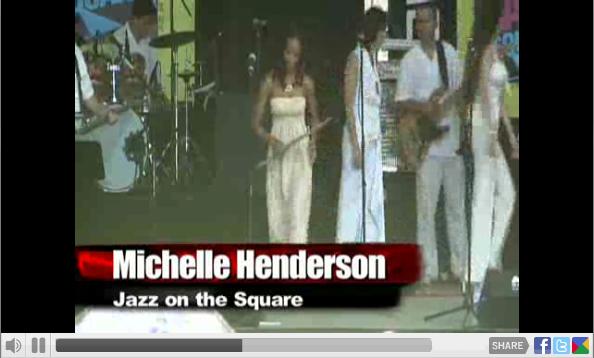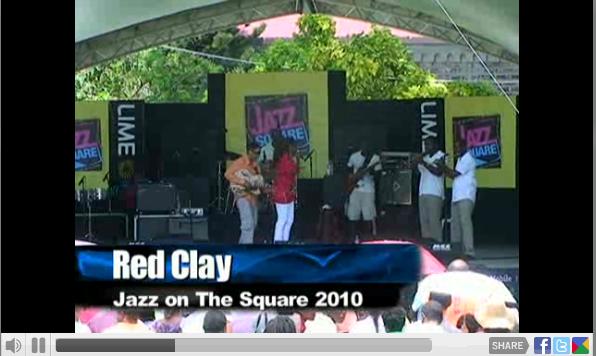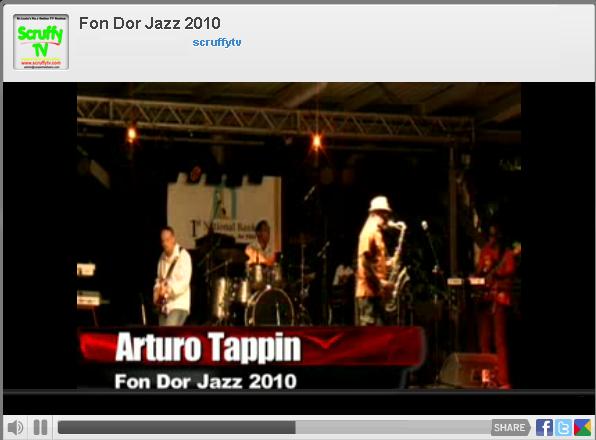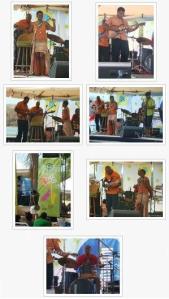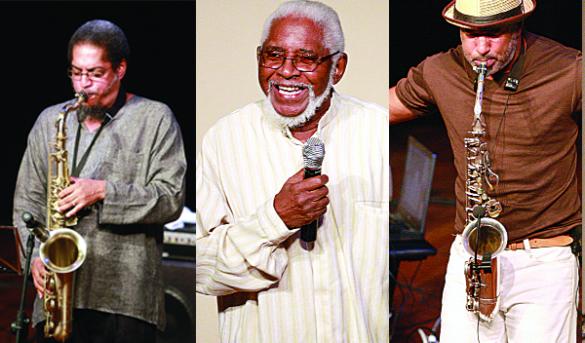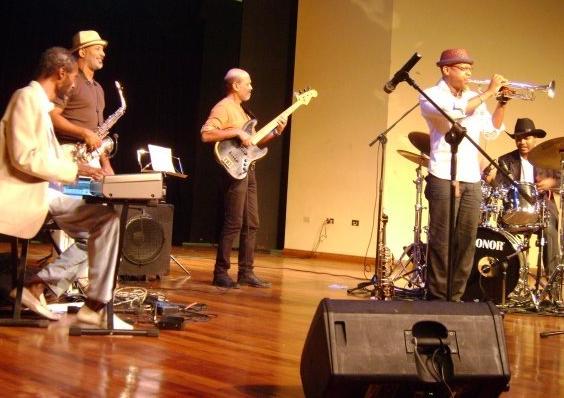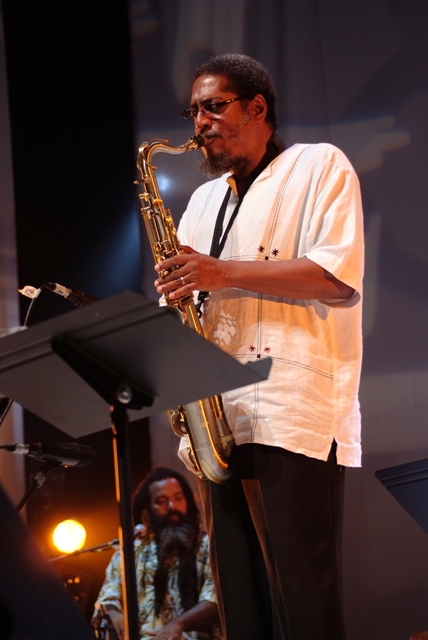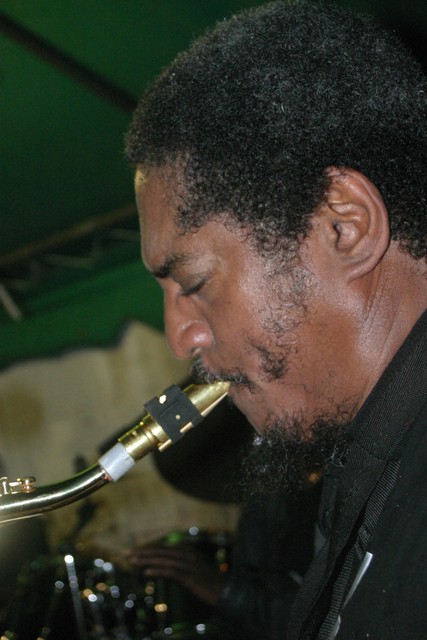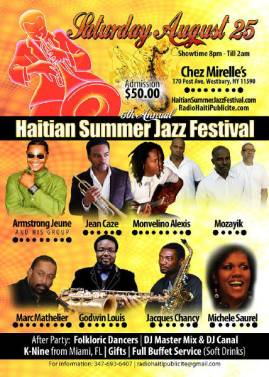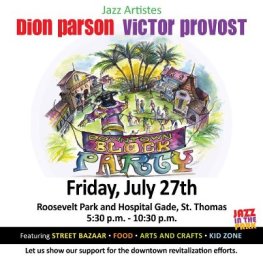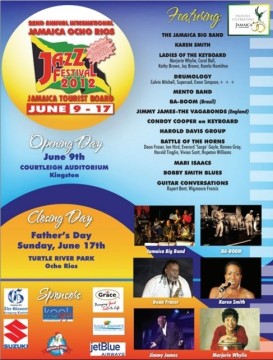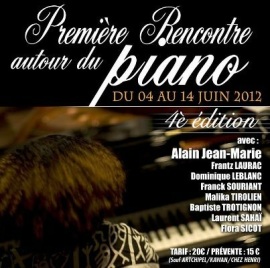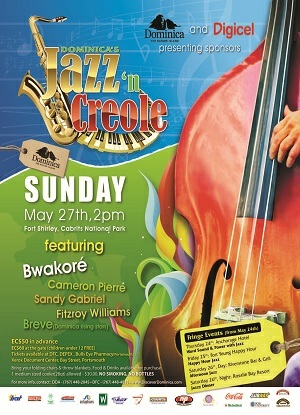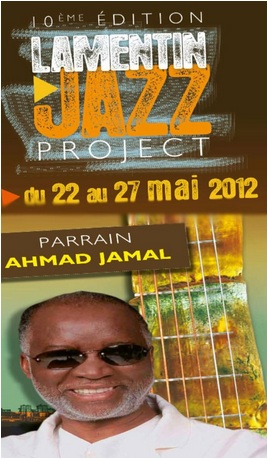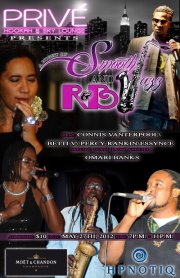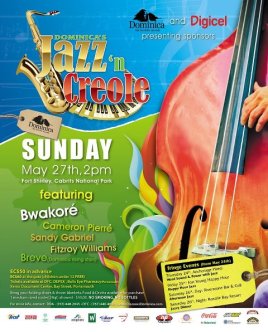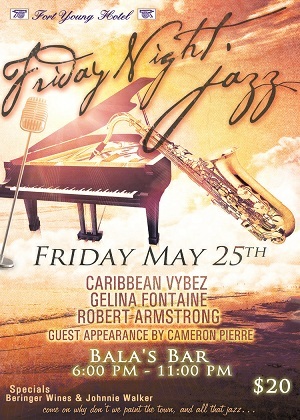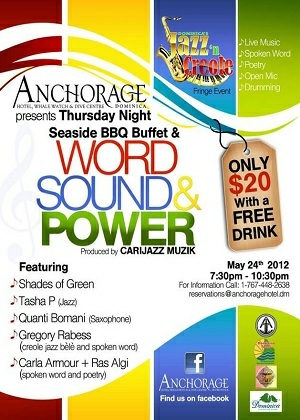
Barbados
As journalists and music critics, we’ve all been here before.
Another Caribbean Jazz festival line-up.
Another festival in all of its varied ups and downs.
Another commentary…by John Stevenson
The recently-concluded Barbados Jazz Festival, featuring non-jazz headliners – notably British pop icon James Blunt, and Neo-Soul diva Angie Stone, represents a curious and interesting departure from previous editions of the festival. By way of a ‘trojan-horse’ styled marketing initiative that front-ended non-Caribbean acts, the festival actually boasted a high quotient of Bajan and Caribbean talent.
As I’ve mentioned elsewhere, the history of Jazz festivals is littered with successful box-office non-jazz acts. If the world-renowned Montreux Jazz Festival (organised by the astute Swiss man Claude Nobs) can headline pop and rock acts such as Chaka Khan and Carlos Santana, who is to argue with GMR International (organisers of the Barbados Jazz Festival) for giving James Blunt top billing?
Of course, I agree with other commentators that the Caribbean and Barbadian talent should have been given more publicity, at the very least in terms of biographical data supplied on the Jazz Festival website. I would like to think, also, that this talent was included because there is a need for us to showcase home-grown musical genius to a wider audience, as opposed to them being a cheaper and hastily shoe-horned-in option in light of less affordable north American acts.
But I digress.
What patrons were treated to over the course of January 12th – 18th in Barbados (surrounded by lush green landscapes, beautiful turquoise waters and fantastic facilities) was a world-class festival featuring varied genres from some of the best musicians anywhere on the planet.
I’ll limit my remarks to the jazzier aspects of the festival, and highlight a few stand out non-jazz ones.
Having flown in from London courtesy the Barbados Tourism Authority via Virgin Atlantic, on Tuesday, January 13th, I missed the sets featuring Aussie vocalist/pianist Diana Jarrett and drummer Harvey Mason, which took place on Night One, January 12, 2009. From all accounts, these two went down well with patrons, Mason leading a powerhouse trio, and Jarrett strutting her stuff on the ivories with elegant standards.
Night Two, January 13 starring Barbadian drummer Dave Burnett
On Night Two, still slightly jet-lagged but curious to discover the seductive musical charms awaiting me at the well laid out Heritage Park in the south-eastern parish of St Philip, I was treated to an hour-long session from opening act, Bajan drummer extraordinaire, Dave Burnett.
The thing I’ve always liked about Mr. Burnett is that he is a man of few words who talks mainly through his kit. He converses eloquently, so to speak, with a cannonade of wicked snare rolls, or a combustive combination of practised sleight-of-hand moves across the toms and the cymbals.
He’s graced all manner of musical situations: calypso, reggae, pop music, you name it, taking it all in his percussive stride. He chose this Jazz festival outing, of course, to display his massive Jazz chops before a full house of appreciative Bajan fans.
The first tune, was the rock-influenced “Evolution” penned by Jeff Golub. There were lots of heavy snare drums on this one, with great interaction from members of the quartet: guitarist Mike Cheeseman; bassist Elvis Edwards; and keyboardist Stefan “Little Monk” Walcott. You could tell that they were accustomed to playing with each other by the fun they were having on stage, and in their considerable collective improvisational acumen.
After this tune, the quartet interpreted Toots Thielemans’ “Bluesette”, and the Billie Holiday-popularised “Body and Soul”, the latter given an especially reverent reading from Mike Cheeseman’s carefully chosen chords.
Though the Heritage Park is undoubtedly a visually inspired venue choice with lovely lawns and tall trees, it is unfortunately not the most acoustically appropriate one. But the band soldiered on nonetheless, showcasing Stefan’s energetic solo spot in tribute to his late compatriot, pianist Adrian Clarke, on the tune “Castellano”.
Burnett and company’s rendition of Andre Woodvine’s “Machine Code” was particularly interesting. It is a tricky composition with a slippery pulse; well-suited to interpretation from a master drummer and percussionist.
Burnett also doubled on flute much to the amusement of some members of the audience. He chose a buoyant calypso number which delighted all.
After “refuelling” with some good Bajan fishcakes and a stroll across the expansive grounds of the Heritage Park, it was great to see the second set, spotlighting the silky smooth vocals of prize-winning local star-in-the-making, Dwane Husbands. Still in his early 20’s, the dynamic young man crooned his way into the affections of his adoring audience, singing a selection of Nu-Soul and R&B covers such as Stevie Wonder’s “ (As) Always”.
Night Four, January 15 starring Trinidadian trumpeter Errol Ince
Perhaps one of the most fulfilling nights for Jazz aficionados at the Barbados Jazz Festival 2009 was Night Four, with the arc lights resting gloriously on the Trinidadian trumpet veteran Errol Ince. The setting was gorgeous: a stage on the beach with the gently crashing waves of the Atlantic Ocean in the background; the elegant, well-tended sprawl of the ritzy Crane Beach Resort all around and a half moon casting its soft light on the waters.
After a lavish introduction from Barbados’s Chief Justice, Sir David Simmons – an avid Jazz fan and amateur trumpeter – Ince got off to a somewhat shaky start with Benny Golson’s “Killer Joe”. His youthful riddim’ section featured Leston Paul on keyboards, flash guitarist Theron Shaw, and drummer Sean Thomas. However, any doubts about Ince’s legendary prowess on the horn were cast aside with his masterly take on Miles Davis’s “Freddie Freeloader”. After all, Ince was voted Europe’s best trumpet player for five consecutive years: 1968, 1969, 1970, 1971 and 1972. He also played alongside Maynard Ferguson and Shirley Bassey, and arranged calypsos for the royalty of this genre: Black Stalin, Baron, Mighty Duke, Melody, Swallow and Calypso Rose.
Indeed, alongside stirring renditions of standard tunes such as “Stardust”, “What’s New”, and “Girl From Ipanema”, Ince also treated patrons to Jazz treatments of kaiso chestnuts like Mighty Sparrow’s “Rose” and Lord Kitchener’s “Old lady Walk a Mile (and a Half)”. Leston Paul’s Jazz affinities were on display in full force as he utilised his synthesisers to the max, backed by the gentle but persuasive accompaniment of guitarist Theron Shaw.
“Indeed, my previous misgivings about the non-jazz aspects of that festival – at least in this year’s incarnation of it – have evaporated completely. The world needs to see the level and diversity of talent available among young Bajans – and I say this without the slightest hint of bias (smile). If the Jazz festival does it, I say go for it. When Carlos Santana and Chaka Khan appeared at the Montreux Jazz Festival, no one complained, so we need to use every vehicle possible to push our own. In this respect, the Barbados Jazz Festival 2009 was a roaring success! Take a bow Gilbert Rowe!” – John Stevenson
Night Five, Friday 16 starring Raf Robertson and Birdsong Academy
Night Five was also a Jazz lover’s heaven.
The setting was also beautiful, within the expansive and immaculately manicured grounds of the Barbados Prime Minister’s residence, Ilaro Court. Trinidadian keyboardist Raf Roberston was the opening act, showcasing his instrumental wizardry. Raf, who is averse to playing acoustic piano, is still able to tease out subtle nuances and dynamics from the electric keyboards he uses.
With the exception of Kenny Barron’s “Voyager” and Billy Strayhorn’s “Raincheck” he gave first-class Jazz treatments to tunes that are familiar to us in the Eastern Caribbean: Bob Marley’s “Running Away”, Andre Tanker’s “Forward Home”, Clive Zanda’s “Fancy Sailor”, and the late Adrian Clarke’s “Roxy Roundabout”.
But more than an instrumentalist, Raf is also a committed teacher. Joining him on stage were some of his prized young students, the “Birdsong Academy”, comprising of two pannists and a brass section featuring the captivating soprano saxophonist and vocalist Niyol Maswell. Young Niyol sang a heartfelt and moving rendition of Ras Shorty I’s “Good Night My Children”. Though he is unsighted, he demonstrated 20/20 musical vision and insight in a way that floored everyone.
“Raf Robertson and the Birdsong Academy stole the show.“ – John Stevenson
Dee Dee Bridgewater was the next act. As if taking the baton from Raf’s group, and pushing the geographical theme slightly further across the waters, Dee Dee proceeded to sing Afro-Latin standards such as “Besame Mucho”, “Obsession” (popularised by Celia Cruz), Milton Nascimento’s “Vera Cruz”, and “Afro Blue”, among others. Her crack group included Puerto Rican Edsel Gomez (piano), bassist Ira Coleman and Vince Cherico (drums). I dare say Ms Bridgewater’s sassy and sensual stage presence was a bit too overwhelming for the prim-and-proper audience who appeared happy to just sit in their chairs and provide polite applause. Needless to say, Ms Bridgewater cheerfully admonished them to loosen up!
The Final, January 18 starring the Barbados Community College (BCC) Jazz Project featuring Kellie Cadogan and Hilario Duran
The final day of the Jazz festival – day two of Jazz on the Hill at the scenic Farley Hill National Park – yielded its fair share of melodic surprises.
After heavy rains on Saturday January 17th, it was feared that more rain might hamper proceedings on the last day of the Jazz festival. Thankfully with bright sunshine and the musical rays provided by the Barbados Community College (BCC) Jazz Project as opening act, things got off to a fine start.
I found this band to be totally engaging. The lead singer was songbird-on-the-rise Kellie Cadogan. I think she will prove in future years to be talent that will be seriously reckoned with; she is already possessed with a formidable grasp of Jazz fundamentals, great poise and a highly infectious stage manner. And she’s not yet 30!
Her original, “Believe” was particularly poignant, as well as her warm rendition of “God Bless the Child” featuring John Matthews’s guitar.
I also thought that young pianist Nikita Vaughn, and saxophonist Nicholas Timothy were impressive, especially on Ronnie Laws’s “Always Around”.
Cuban-born, Canada-based pianist Hilario Duran was also one of the most popular acts on the last day. Though he can play up a storm along the lines of a Chucho Valdés or Gonzalo Rubalcaba, Señor Duran chose to present a band that played danceable salsa pieces like Los Van Van or the Buena Vista Social Club. It went down like the Titanic among the people who thronged the stage to demonstrate their fancy Latin dance steps.
Out front, singers Jailen Duran (Hilario’s daughter) and Luis Mario Ochoa swayed and sashayed to the infectious grooves set up by Hilario and his magnificent band members. The montuno piece “Cuando mi Toca a mi” was pretty, as well as “Yemanja”, “Amigo”, “Cinjura de Alambre, “Bilongo” and the humorous “La Cabra y el Monte”.
The Postscript…
Mention must be made of the daring Barbadian alternative rock group, Kite, which opened for James Blunt on Night Three. Kite, which experiments with the two-tone sound epitomised by groups like Madness, the Specials and the Police, brings an interesting vocabulary to the grammar of contemporary Caribbean music. Fronted by guitarist Brian Marshall and vocalist/guitarist J.J. Poulter, they combine a raw rock energy with a unique sensitivity to Bajan and Caribbean culture. This became clear when they pleased crowds at the Sir Garfield Sobers auditorium with tunes like “Macaroni Pie”, “Shine”, “Your House” and “Light from a Dead Star”.
Nexcyx, essentially a Bajan club-scene cover tunes band, which played on Saturday January 17th at Farley Hill, was also impressive, fronted by singers Mahalia Philips and Rochelle Griffith. They have the distinction of performing twice back to back at the Jazz festival after wowing audiences while opening up for Erykah Badu last year. Their single “Like Fairy Dust” has already achieved popularity in Canada, and in the wake of internationally-acclaimed Rihanna, the Bajan Def Jam recording diva, their further international exposure appears to be certain.
It is evident that Barbados and the Caribbean received prominent attention at this year’s Barbados Jazz Festival.
Whether or not a template has been established for 2010 remains to be seen.
John Stevenson is a London-based Bajan free-lance writer and broadcaster.
John’s Previous Post: CD review of Luther François’ “Castries Underground”








